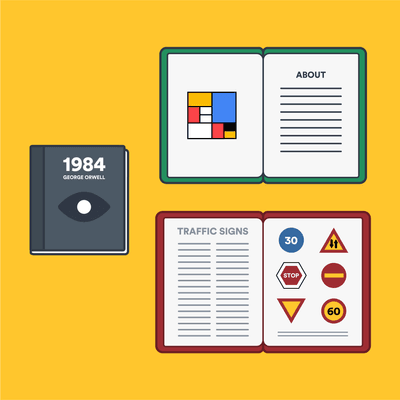What is a secondary source?

Secondary sources are sources that describe an event but did not originate in the time period they describe. They were created by someone based on firsthand accounts. They are the second time the event has been described or depicted. In most cases, secondary sources are books or scholarly articles.
How do I know if my material is a secondary source?
If your point of reference is a book, an article, or an overview of an event, the chances are that it is a secondary source. These texts will have a bibliography and a list of references. This bibliography will include the works that inspired the research, or were quoted within the text itself. Examples of secondary sources are:
- Books
- Articles
- An overview of an event written by someone who did not witness the event
- Reviews of books/pieces of art
- A commentary
- Encyclopedias
These guides can provide more clarification on secondary sources and cases where things are not 100% clear:
➡️ Is an Encyclopedia a primary or secondary source?
➡️ Is a documentary a secondary source?
➡️ Is a textbook a secondary source?
How do I find secondary sources?
Secondary sources are a lot easier to come by than primary sources. Secondary sources will help you find introductory information about your research. Encyclopaedia entries are secondary sources, and so are commentaries, reviews, and criticisms.
Any material which summarizes research undertaken by someone else is a secondary source. A project you complete, if consulted by someone else and used in their research, is a secondary source.
Why do I need secondary sources?
Secondary sources will provide you with different ideas and standpoints about the subject you are researching. Each text will have its own bias and will look at the subject from a different angle, so by reading secondary sources you are engaging with multiple interpretations of the same event.
This broad reading gives you a solid foundation to analyze the event/text/object while acknowledging the bias and outlook of research professionals. By engaging in the reading of secondary sources, you are also backing up your arguments with the support of well-known experts in the field. Without reading secondary sources, you cannot be sure if your argument is valid, or if you are plagiarizing.
Do I need to cite secondary sources?
Yes! Without a shadow of a doubt, yes. Secondary sources are written by people who are arguing for or against the point you are making. You also need to reference where you got your ideas and quotes from. If you are paraphrasing, you need to reference where you are paraphrasing from.
If you do not cite your secondary sources, you are plagiarizing. Plagiarism is completely unacceptable. It is an act of fraud because you are stealing someone else’s idea and pretending it is yours. In some countries, plagiarism is illegal if/when it violates copyright.
How you cite your secondary sources depends on the requirements of your publication/university, but what is important is that you make sure you cite everything correctly. This includes not only the author and title of the text, but also the issue or edition of the book/article, the page number, publisher, and in the case of websites, the date you accessed the information.
Frequently Asked Questions about secondary sources
📹 Is a documentary a secondary source?
A documentary can either be a secondary or a tertiary source. It is a secondary source if it analyses different types of sources and a tertiary source if it only repackages information and doesn't provide interpretations or opinions. Take a look at Is a documentary a secondary source? for more insight on the topic.
📗 Is a textbook a secondary source?
It depends. A textbook can either be a secondary or tertiary source and, in seldom cases, a primary source. Take a look at Is a textbook a secondary source? for more insight on the topic.
🤗 What are the benefits of using secondary sources?
Secondary source data is time-saving and cost-efficient, as the data was collected by someone other than the researcher. In other words, the work is already done by someone else, and you can use this to your advantage.
😶 Is an encyclopedia a secondary source?
No, an encyclopedia is a tertiary source. Take a look at Is an encyclopedia a primary source? for more insight on the topic.
🤠 What are some examples of secondary sources?
Some examples of secondary sources are: Biographies, histories, reviews, literary criticism, discussions of importance, analysis of clinical trials, and reviews of results.


